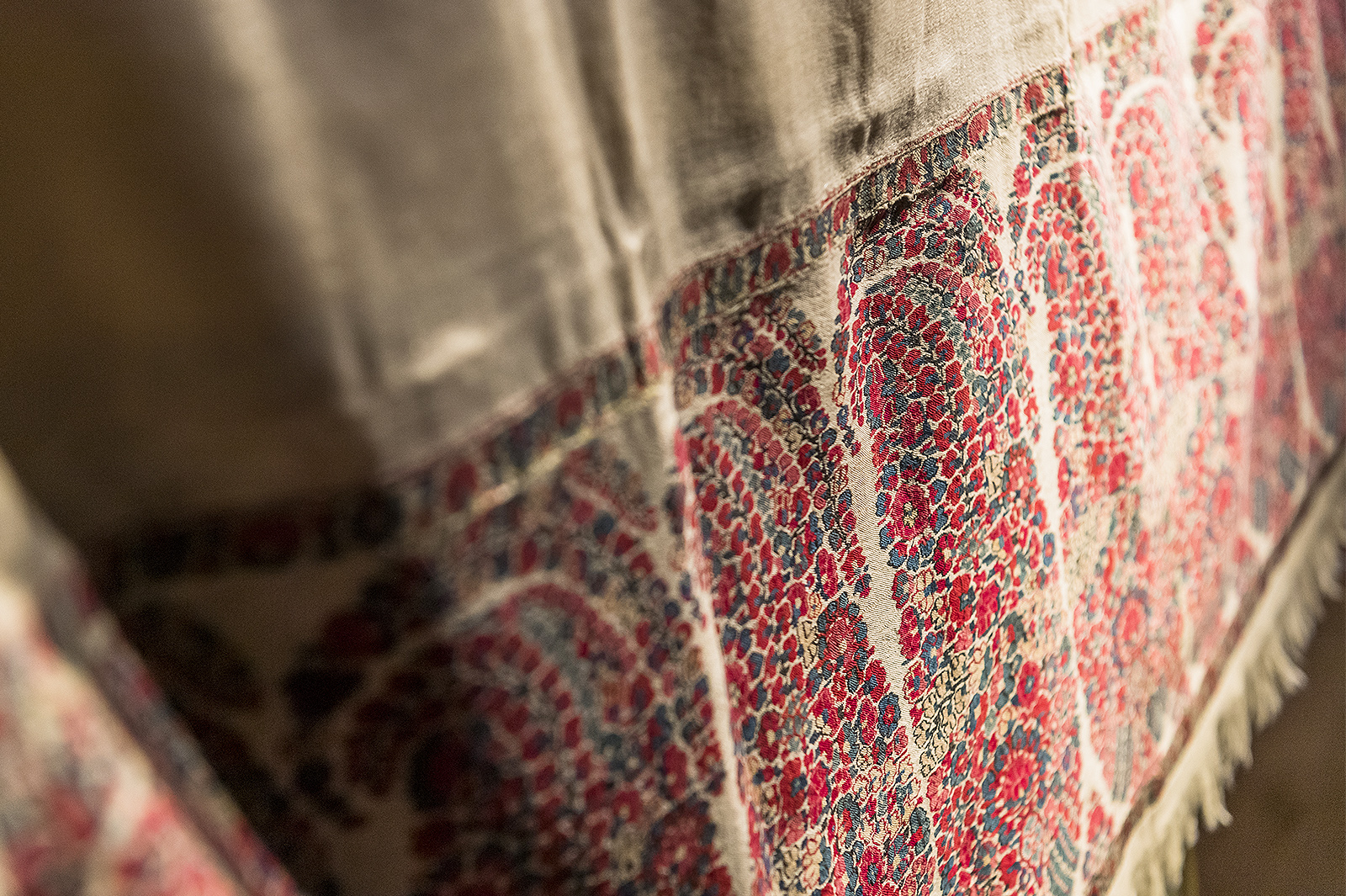
The Indra and Harry Banga Gallery of City University of Hong Kong (CityUHK) is excited to announce the exhibition “A Passion for Silk: The Road from China to Europe”, curated by art historian Dr Isabelle Frank and co-curated by art historian Ms Laure Raibaut and Ms Anne Camilli. The exhibition presents the 2000-year history of silk, displaying exquisite artefacts from around the globe. The exhibition will be on view from 11 April to 1 September 2024 in the Indra and Harry Banga Gallery at CityUHK.
As part of CityUHK’s 30th anniversary celebration, this exhibition delves into silk’s storied history, from its emergence in ancient China through its evolution to the present day. The exhibition presents approximately 150 exhibits, including many from Mr Chris Hall’s collection of Chinese textiles, one of the best and most comprehensive in the field. These beautiful artefacts, originating from China, India, France and Italy, reveal major developments in art, trade, fashion and technology. At the same time, the exhibition demonstrates the crucial cultural role played by Chinese silk and silk-making for millennia across the globe.
Following the journey of silk through space and time, the exhibition has seven distinct areas: (i) “What is Silk?”, (ii) “As Good as Gold”, (iii) “From the Tang through the Qing dynasties”, (iv) “Keeping Up with Fashion”, (v) “On the Road: From China to Europe”, (vi) “France Takes the Lead”, and (vii) “Chinese and French Silk in the 20th Century”. Tracing the circuitous route of silk from China to Europe and back, the exhibition showcases how this luxurious material acted as a medium for international exchange and highlights how it helped shape the modern world.


“What is Silk?”
The introductory section traces the origins of silk production back to 8,500 BCE in China, when sericulture, the art of rearing silkworms, first arose. This section reveals how silk-making moved from the home to state-run workshops, eventually becoming a fully-fledged industry, as Chinese emperors realised its economic potential. Even before mechanisation in the 19th century, silk in China was already being produced at an industrial scale.
“As Good as Gold”
Next, the exhibition charts silk’s incredible value as it became equivalent to gold, from the Zhou dynasty (1046–256) BCE to the late 16th century. Chinese emperors maintained silk’s value and quality by establishing strict standards for its weight, colour, size and weave, which enabled it to be used as a common and reliable currency. Methods of weaving grew in sophistication and complexity during this period, producing coloured, patterned silk for luxury furnishings and clothing for the elite.

“From the Tang through the Qing dynasties”
Over the centuries and across many dynasties, silk continued to evolve in terms of its artistic and creative style. The blossoming of Chinese silk occurred in part thanks to ongoing commercial, cultural and artistic exchanges between the Han Chinese and neighbouring kingdoms—exchanges that occurred in both directions. As silk’s popularity and availability increased, so too did the desire on the part of the imperial household to control its usage through laws regulating who could wear it.
“Keeping Up with Fashion”
Fashion has always existed among the elites, and the Chinese court was no exception. The almost prohibitive cost of a new garment (which required almost two years to make) meant that the upper classes had to find other ways to update their wardrobe. Accessories such as collars, pouches, hats and shoes allowed both men and women to stay fashionably dressed by adding beautifully crafted silk elements to their robes.
“On the Road: From China to Europe”
The importance of Chinese silk across the globe is introduced in the next section. The exhibition briefly traces the development of silk making as it moved from China across the world. Initially traded with Asian countries, then with Egypt, Persia, and the Greek and Roman empires, silk was highly sought after, and rulers wished to learn the secret of producing the fabric, but the secret was heavily guarded by China. Nonetheless, like all secrets, sericulture and silk-making became known to the rest of the world through various channels, such as immigration and industrial espionage.


“France Takes the Lead”
In Europe, France dominated the silk industry, especially the Lyon region, from the 17th century to the end of the 19th century. As in China, French kings exploited the economic potential of silk, making it one of the country’s main exports. This section shows how French technological inventions allowed the mechanisation of silk production and how its creative innovations introduced changing design styles over the country’s 200-year history.
“Chinese and French Silk in the 20th Century”
The last section shows that despite industrialisation, artificial silk and the end of the European aristocracy and Chinese dynasties, silk continues to be valued by governments and consumers alike. In both China and France, the modernisation of silk production has occurred alongside the preservation of traditional craftsmanship, which remains dedicated to the creation of highly sought after luxury furnishings and clothing.
Dr Frank, Curator at Large, said, “This exhibition is the result of a great deal of research on the topic of silk production and its development in China and Europe; it also benefited from generous collaboration with many renowned silk collectors, historians and specialists, who shared their knowledge with Ms Laure Raibaut, Ms Anne Camilli (the curatorial team) and me. I am extremely happy to mount this exhibition at CityUHK for the public and invite them to immerse themselves in the history of silk—which has been so integral to Asia’s development over the millennia”.
Since its establishment, the Indra and Harry Banga Gallery at CityUHK, has been recognised for exhibitions that preserve cultural heritage and bridge Western and Asian cultures. “A Passion for Silk; The Road from China to Europe” continues this tradition and carries on the Gallery’s mission to provide artistic, innovative, technology-rich exhibitions that engage with the community.
Details of the exhibition “A Passion for Silk: The Road from China to Europe”:
| Exhibition period: | 11 April to 1 September 2024 |
| Opening hours: | 10am – 7pm (Closed on Mondays) |
| Venue: | The Indra and Harry Banga Gallery 18/F, Lau Ming Wai Academic Building, City University of Hong Kong, Tat Chee Avenue, Kowloon Tong |
| Admission: | Free, prior online registration is required: https://www.cityu.edu.hk/bg/visit/book-a-visit |





